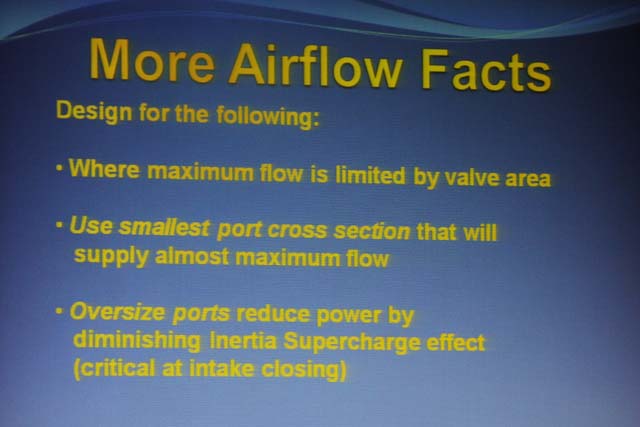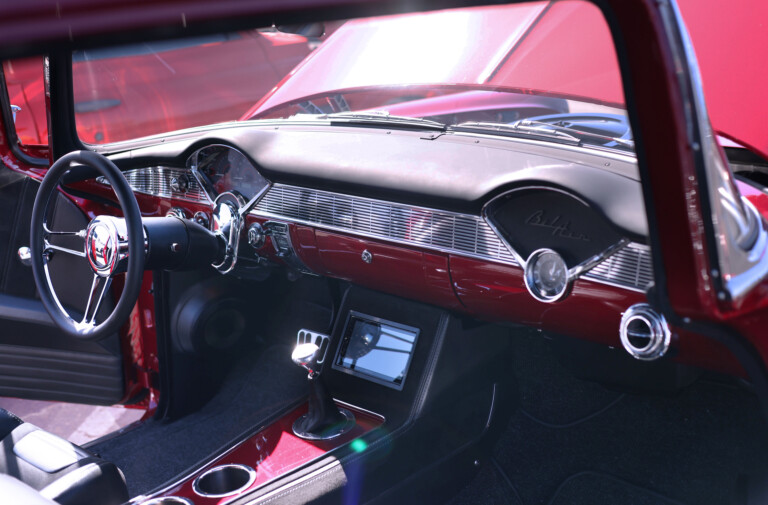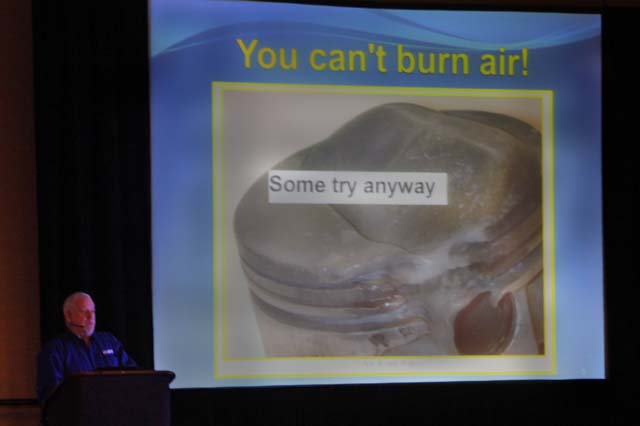
Harold Bettes is one of the day-one presenters at the annual Advanced Engineering Technology Conference.
Power and Performance News is at the Advanced Engineering Technology Conference (AETC), which annually is a gathering of the top engine builders in the racing industry. Every year the AETC presents a series of top-flight speakers on a variety of topics–but all having to do with making horsepower.
In the next few days we’ll be bringing you several stories highlighting the best information from the conference. We’ll concentrate on the stuff that you can take into your shop and do yourself, or great information that you can use when choosing components for your next engine upgrade.
This probably falls into the latter category. Very few of us are actually porting our own cylinder heads, but knowing what does and doesn’t make power can really be helpful when it comes to sorting what is useful and what is little more than advertising jargon when looking for your next cylinder head, intake or exhaust system.
The presenter, Harold Bettes has been in the business for years and worked for a variety of companies. We especially like his straightforward approach to presenting what can be a very complex topic.
The Engine is an Expensive Air Pump
 You’ve probably heard some variation of this old saying before. It gets repeated a lot because it is true. The goal when it comes to making horsepower is to burn all the fuel you can every time the spark plug fires. But if you are going to burn more fuel, you also have to introduce more air into the combustion chamber, and that’s where the bottleneck comes into play. For every one part of fuel being burned, you need approximately 14 parts air, so you can see why adding more fuel is easy but managing to squeeze more air in there can be troublesome–especially with a naturally aspirated engine. In other words, you don’t burn air, but air should definitely be critical to your thinking.
You’ve probably heard some variation of this old saying before. It gets repeated a lot because it is true. The goal when it comes to making horsepower is to burn all the fuel you can every time the spark plug fires. But if you are going to burn more fuel, you also have to introduce more air into the combustion chamber, and that’s where the bottleneck comes into play. For every one part of fuel being burned, you need approximately 14 parts air, so you can see why adding more fuel is easy but managing to squeeze more air in there can be troublesome–especially with a naturally aspirated engine. In other words, you don’t burn air, but air should definitely be critical to your thinking.
One of the most effective ways of improving airflow into practically any engine is simply by reducing the restrictions. The type of engine you are working on will determine where the restrictions will be. For example, Bettes outlined the areas that are most important depending on valve lift. For low valve lift–anything up to 0.200 of an inch–the shape of the valve and valve seat is the most important factor for encouraging flow. From 0.200 to 0.500 lift the valve and seat shapes are still important, but the port shape is quickly gaining in importance. And when the valve lift is 0.500 of an inch and greater the combustion chamber shape as well as the port shape and size become your primary concern–with valve and seat shape not far behind.
So what does this have to do with you? If you are building a milder engine with valve lift that maxes out at a half inch or so, you can base your choices on knowing what the engine likes in the low-lift ranges.
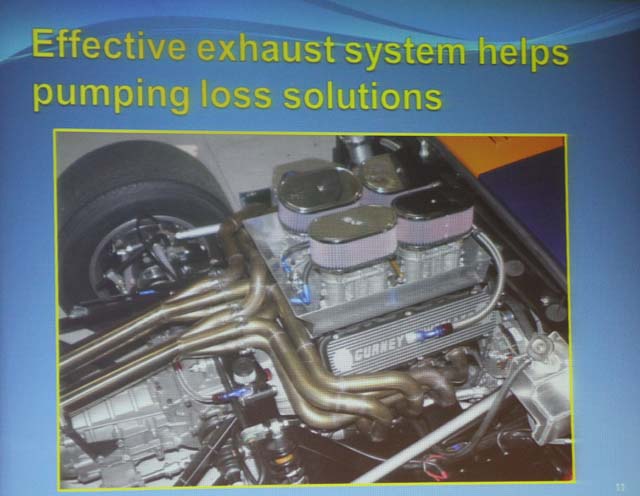
The engine isn’t concerned with separate components–only performance as a whole. For example, it is pointless to have a high-flowing exhaust port if your headers are aweful. When testing you must consider effectiveness of the entire system.
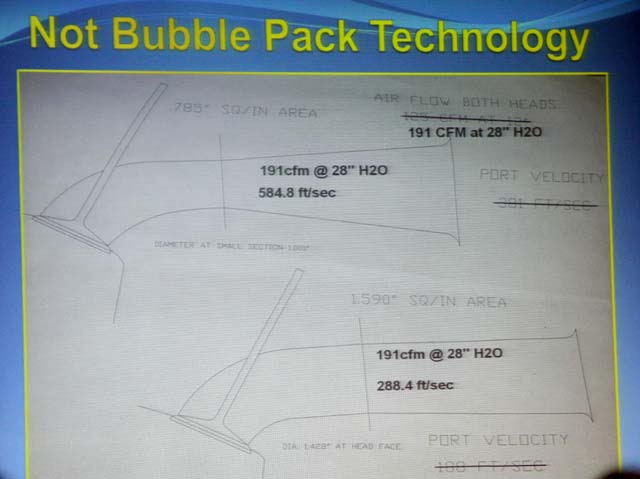
Here’s a very interesting real world test of two different ports. Both flowed the same amount of air and produced the same peak torque number. But the smaller port produced a much higher air velocity inside the port. As a result, it is the smaller port that produces better numbers short of peak. Remember, total flow isn’t teh only target, velocity is also a critical factor.


